If you’re looking to create a low-maintenance pond that’s affordable, easy to maintain, and delivers crystal-clear water, you’re in the right place.
My name is Kev and I’m all about helping you build and maintain beautiful ponds without breaking the bank. In this post, I’ll share how I built a DIY bog filter for a concrete stock trough pond, turning it into a thriving, clear-water ecosystem.
Why Choose a Bog Filter?
A bog filter uses natural processes to keep your pond water clean and clear. It’s cost-effective, easy to build, and can be scaled to suit ponds of any size. With the right design, a bog filter provides:
- Crystal-clear water with minimal effort.
- A natural habitat for fish, plants, and beneficial microorganisms.
- Low running costs, with no need for UV lights or chemical additives.
Let’s dive into how I built my bog filter system and how you can replicate it for your pond.
Pond Setup: Simple, Effective, and Low Maintenance
This particular pond uses a 200L bog filter powered by a submersible pump consuming just 20 watts per hour. The water is pumped into the bog filter, where natural filtration occurs, and then flows back into the pond via gravity.
Here are the main features:
- No UV lights or chemical additives – the system relies entirely on natural processes.
- Minimal maintenance – I haven’t cleaned the filter or pump for over a year, and the water remains crystal clear.
This setup perfectly embodies what I strive to share: affordable, low-maintenance pond solutions that anyone can build.
Step-by-Step: How to Build a DIY Bog Filter
1. Choose Your Container
I used an old olive drum, but any watertight container that can support the weight of water will work. Cut the top off with a handsaw to create your filter container.
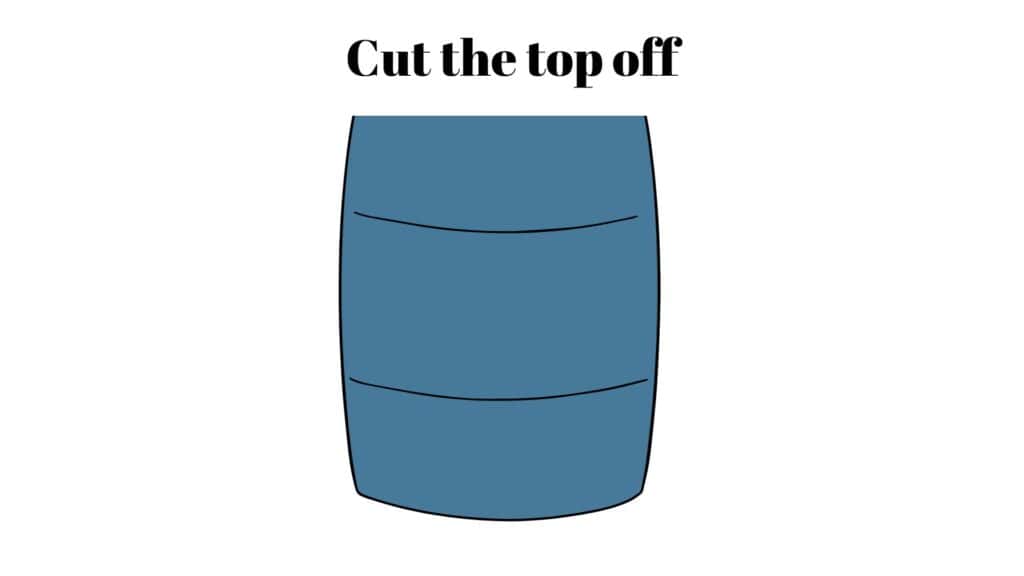
2. Drill the Necessary Holes
- One hole near the top for the water to overflow back into the pond.
- One hole at the base with a valve for easy draining and cleaning.
Use a hole saw and Uniseals to create watertight connections.
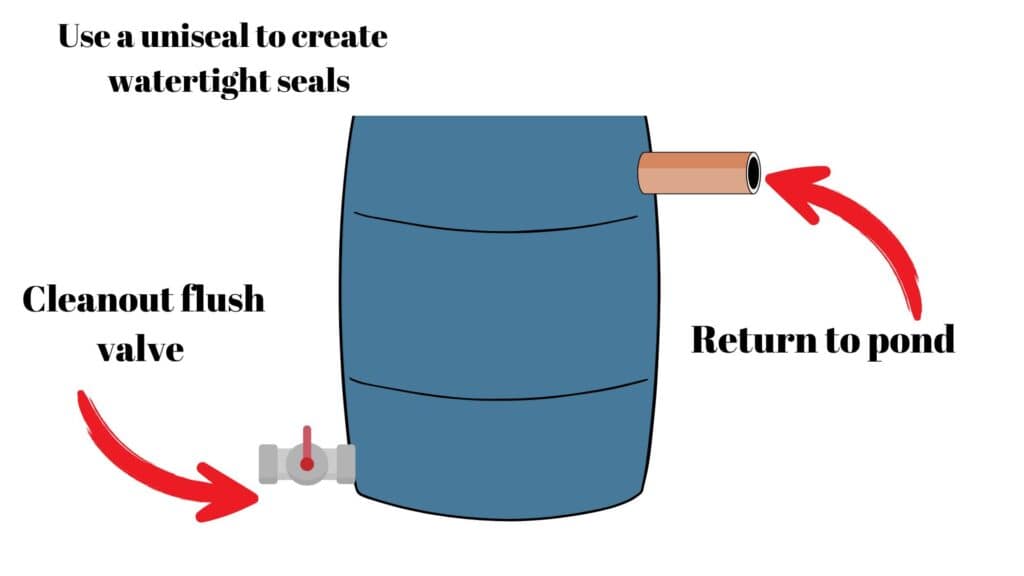
3. Install the Plumbing
- The pipe from the pump goes over the top of the container and extends to the bottom of the filter.
- Add a breather hole near the top of the pipe to prevent backflow if the pump stops.
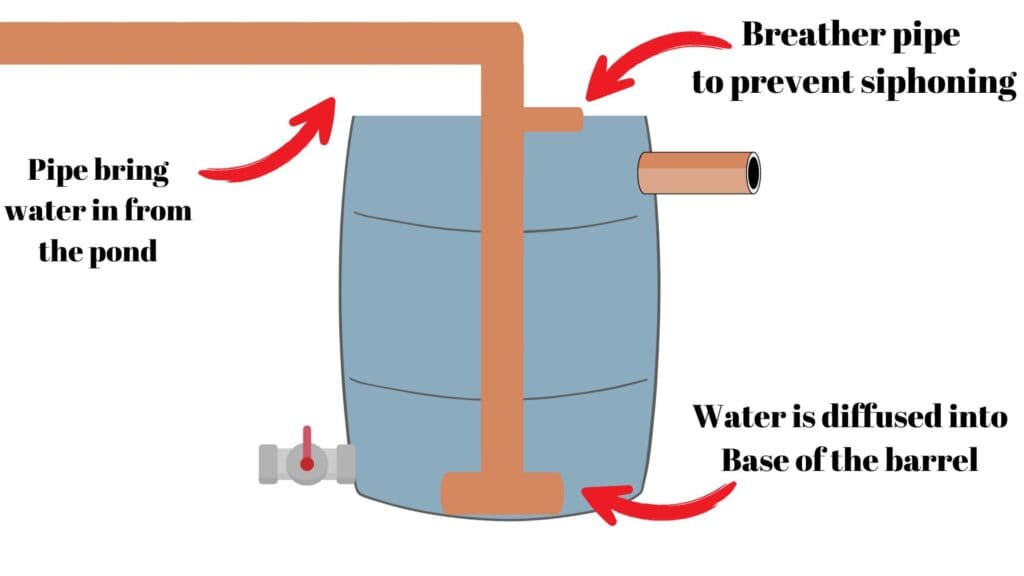
4. Add Filter Media
- Bottom Layer: Large rocks or drainage pipes to create a void for debris to accumulate.
- Middle Layers:Medium sized rocks that will prevent the top layer sinking to the bottom layer.
- Top Layer: Smaller pebble that provides excellent surface area for beneficial bacteria.
Rinse the media thoroughly before adding it to the filter.
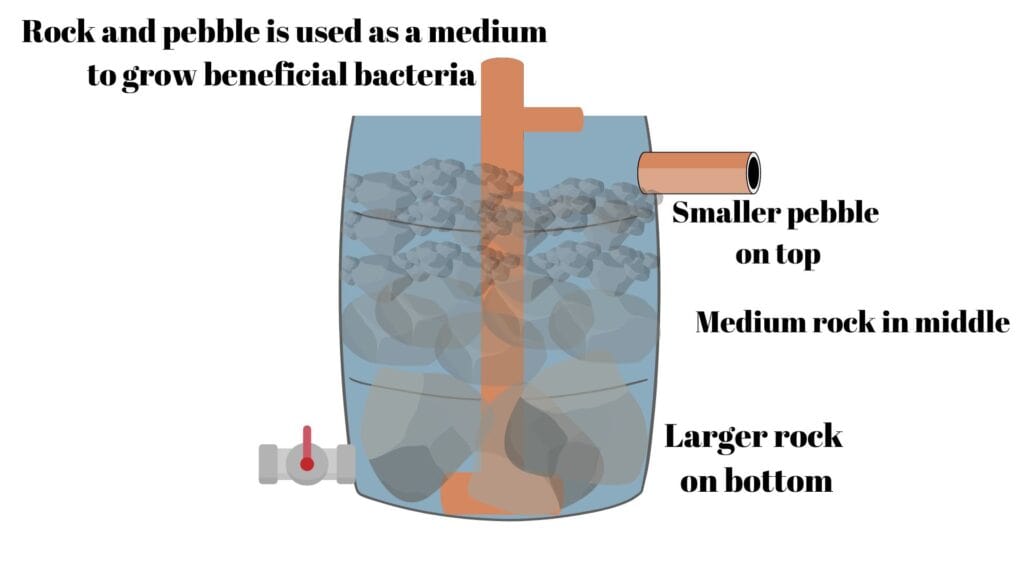
5. Connect the Pump
Use flexible hose or PVC pipe to connect the pump to the filter. Ensure the pump is slightly elevated off the pond floor to avoid draining the pond in case of a leak.
The video below will give you some tips on how to connect various types of pipe, or tubing from the pump to the bog filter.
Why This Design Works
The key to this system’s success lies in the beneficial bacteria that colonise the filter media. These bacteria process nitrogen and phosphate, keeping the water clean and healthy.
The more surface area available (filter media, substrate, pond walls, plants, etc.), the more bacteria can thrive.
Additional Benefits:
- Encourages a balanced ecosystem with fish, plants, and microorganisms.
- Low operational costs, using minimal electricity and no chemical treatments.
- Scalable design that works for small ponds, koi ponds, or even turtle habitats.
Tips for Success
- Filter Size Matters: For small fish, aim for a filter size at least 10% of your pond’s volume. For koi or turtles, increase the size. Try my free bog filter calculator.
- Position the Pump Carefully: Keep it off the pond floor to prevent emptying the pond in case of a plumbing issue.
- Experiment with Substrate: While I used scoria, you can try sand, dirt, or other materials depending on your goals.
Algae: Friend or Foe?
New ponds often experience algae growth, which is normal and even beneficial. Algae:
- Reacts quickly to changing water conditions.
- Provides food for fish and other pond organisms.
- Is an essential part of any aquatic ecosystem.
With time, a well-designed bog filter will balance nutrient levels, reducing excess algae.
Resources to Get Started
To make your DIY pond journey easier, I’ve created several resources:
- Bog Filter Sizing Calculator to ensure your system is optimised.
- Detailed videos and PDFs with formulas and tips for pond construction.
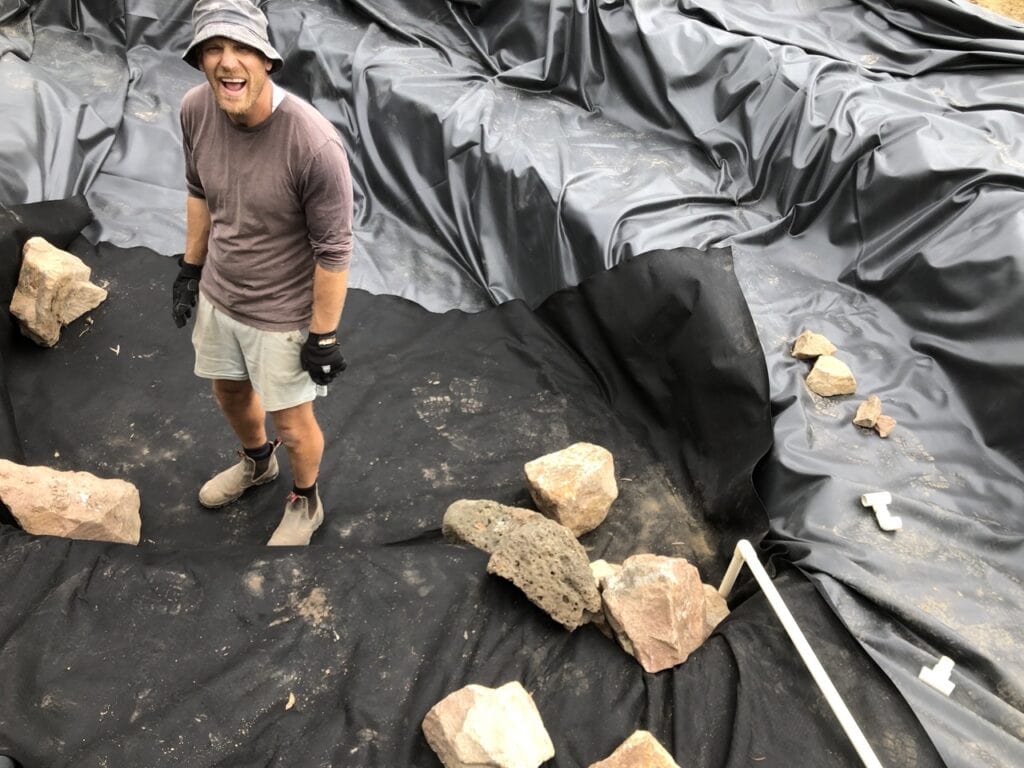
Blueprint I use to build my ponds
- All the numbers I use to design my ponds, delivered straight to your inbox
- These formulas have helped people all over the world build beautiful, low maintenance ponds, without spending a fortune.
- Access to a private community of like minded people and a chat bot that loves answering pond related questions.
Final Thoughts
This bog filter design has transformed my concrete stock trough pond into a thriving underwater oasis. This video show how clean and clear the water really is:
The water is fish are breeding, and the ecosystem is balanced. Whether you’re building a small wildlife pond or a large koi pond, the principles are the same – and the results are consistently stunning.
For more ideas and step-by-step guides, heads to the home page, subscribe to my YouTube channel and sign up for my mailing list. Let’s create beautiful, low-maintenance ponds together!
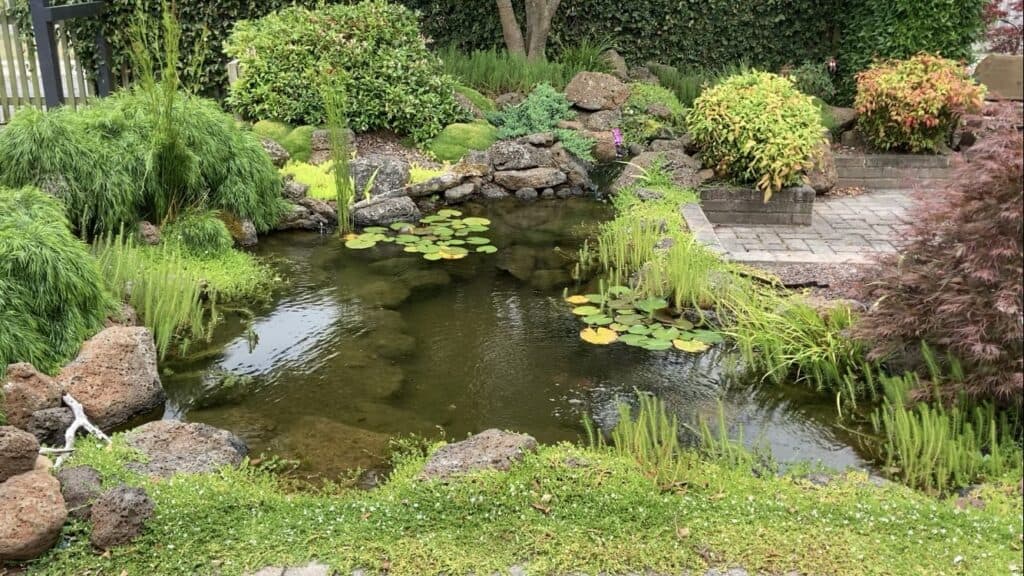
Join my free email list
If you would like to join my free email list click the button below.
I promise I won’t spam you, I’ll only send information I think can help you save money building and maintaining a pond.

